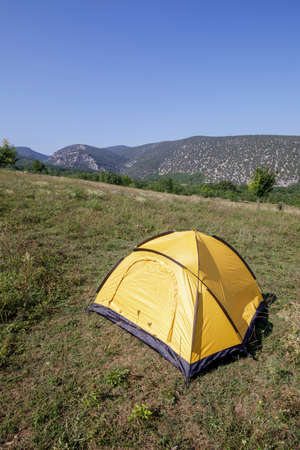Understanding Sleeping Bag Temperature Ratings
When it comes to choosing the perfect sleeping bag for your camping adventures, understanding temperature ratings is key. Whether youre backpacking through chilly mountain trails or enjoying a warm summer night under the stars, knowing how to decode sleeping bag temperature ratings ensures you stay comfortable and safe.
What Are Sleeping Bag Temperature Ratings?
Temperature ratings are guidelines that indicate the lowest temperature at which a sleeping bag can keep an average sleeper warm. In the U.S., many bags follow the EN (European Norm) or ISO standard, which helps provide consistent and reliable information for comparison.
Main Types of Temperature Ratings
| Rating Type | Description |
|---|---|
| Comfort Rating | The temperature at which a cold sleeper would feel comfortable. Ideal for beginners or those who get cold easily. |
| Limit Rating | The lowest temp a warm sleeper can endure while staying relatively comfortable. Often used by experienced campers. |
| Extreme Rating | The survival temperature. This rating indicates the very lowest temp at which the bag will keep you alive but not necessarily comfortable. |
Choosing the Right Rating for Your Adventure
Your ideal sleeping bag temperature rating depends on where and when you’re camping. Always consider nighttime temps at your destination, your personal comfort level, and whether you sleep hot or cold.
Suggested Temperature Ranges by Season
| Season | Recommended Temperature Rating (°F) |
|---|---|
| Summer | 35°F and above |
| Three-Season (Spring/Fall) | 15°F to 30°F |
| Winter/Cold Weather | 15°F and below |
Pro Tips for Selecting the Right Temp Rating
- If youre unsure, go with a slightly lower temp rating than expected—you can always unzip if too warm.
- Add a sleeping bag liner to increase warmth without buying a whole new bag.
- Women tend to sleep colder than men, so consider choosing bags rated slightly warmer if needed.
Selecting a sleeping bag with the right temperature rating makes all the difference when it comes to restful nights outdoors. With these basics under your belt, you’ll be better prepared to match your gear with Mother Nature’s mood—whether it’s a frosty alpine morning or a humid summer night in the woods.
2. Sleeping Bag Shapes and What They Mean for Comfort
Choosing the right shape of sleeping bag can make or break your camping experience. Whether youre a side sleeper, a sprawler, or someone who likes to stay snug and warm, theres a sleeping bag shape that fits your needs. Lets explore the three main types—mummy, rectangular, and semi-rectangular—and see how each one supports different sleeping styles and comfort preferences.
Mummy Sleeping Bags
Mummy bags are designed to maximize warmth while minimizing weight. They taper from the shoulders down to the feet, hugging your body closely. This design keeps heat close to your body, making them ideal for cold-weather camping. However, they can feel restrictive if you like extra room to move around while you sleep.
Best for:
- Backpackers focused on warmth and weight
- Campsites with colder temperatures
- People who don’t mind a snug fit
Rectangular Sleeping Bags
If you value space and comfort over efficiency, rectangular bags offer plenty of room to stretch out. These are often found at car campsites or in cabins where weight and pack size aren’t an issue. While they offer more freedom of movement, they don’t retain heat as well as mummy bags.
Best for:
- Casual campers and families
- Warm-weather camping trips
- Sleeper types who toss and turn
Semi-Rectangular (or Modified Mummy) Sleeping Bags
This style strikes a balance between warmth and roominess. With more space than a mummy bag but better heat retention than a rectangular one, semi-rectangular bags are great all-around options for varied conditions and comfort needs.
Best for:
- Campers who want versatility
- Mild to cool temperatures
- Those who prefer some wiggle room without sacrificing too much warmth
Sleeping Bag Shape Comparison
| Shape | Main Benefit | Best For | Heat Retention |
|---|---|---|---|
| Mummy | Maximum warmth, lightweight | Cold weather & backpacking | Excellent |
| Rectangular | Spacious & comfortable | Car camping & warm climates | Poor to fair |
| Semi-Rectangular | A balance of warmth and space | Versatile use & moderate temps | Good |
The shape of your sleeping bag should match not only the temperature of your destination but also how you like to sleep. If youre unsure which one suits you best, try testing different shapes in person at your local outdoor store before heading out into the wild.

3. Down vs. Synthetic Insulation
When it comes to choosing the right sleeping bag for your camping adventures, one of the biggest decisions you’ll face is whether to go with down or synthetic insulation. Both materials have their own strengths and weaknesses, and understanding these can help you make the best choice based on where youre camping, the expected weather conditions, and how much weight you’re willing to carry.
Warmth
Down: Known for its exceptional warmth-to-weight ratio, down insulation provides superior warmth, especially in cold and dry conditions. It traps heat very efficiently by using the fluffy plumage found under the feathers of ducks or geese.
Synthetic: While not as warm as down by weight, synthetic insulation still performs well and continues to insulate even when wet, making it a solid option for damp or unpredictable climates.
Weight & Packability
Down: If youre trying to keep your pack light and compact, down is hard to beat. It compresses easily into a small stuff sack and adds minimal weight to your gear.
Synthetic: Generally bulkier and heavier than down. It doesn’t compress as well, so it can take up more room in your backpack.
Performance in Wet Conditions
Down: This is where down insulation struggles. When wet, it loses much of its insulating power and takes a long time to dry. Some down sleeping bags are treated with water-resistant coatings (like hydrophobic down), but they still dont match synthetics in wet weather performance.
Synthetic: A top performer in wet environments. It retains insulating properties even when soaked and dries faster than down. Ideal for humid areas or rainy seasons.
Quick Comparison Table
| Feature | Down Insulation | Synthetic Insulation |
|---|---|---|
| Warmth | Excellent warmth-to-weight ratio | Good overall warmth |
| Weight | Lighter | Heavier |
| Packability | Packs very small | Takes up more space |
| Wet Weather Performance | Poor unless treated; dries slowly | Performs well even when wet; dries quickly |
| Cost | Generally more expensive | More budget-friendly |
Which One Should You Choose?
If youre heading into cold but dry backcountry terrain and want to minimize pack weight, down might be your best friend. But if theres any chance of rain or high humidity—or if youre just looking for a more affordable option—synthetic insulation offers reliable performance that won’t leave you out in the cold.
A Quick Tip from Seasoned Campers:
If you often camp in varying conditions, consider getting a synthetic bag for wet climates and a down bag for alpine trips. That way, you’re covered no matter where your next adventure takes you!
4. Key Features That Enhance Your Camping Experience
When youre out in the wild, your sleeping bag becomes your bed, your shelter, and your comfort zone. That’s why choosing a bag with the right features can make all the difference in how well you sleep under the stars. Let’s break down some of the key features that go beyond temperature rating and insulation type, helping to boost both comfort and convenience during your outdoor adventures.
Hood Design
A well-designed hood can trap heat around your head—one of the areas where you lose the most body warmth. Look for contoured hoods that cinch snugly without feeling too tight. Some even come with drawcords for easy adjustment while you’re bundled up inside.
Draft Collars and Draft Tubes
These are extra layers of insulated fabric placed strategically to block cold air from sneaking into your sleeping bag:
| Feature | Purpose |
|---|---|
| Draft Collar | Sits around your neck and shoulders to keep warm air in and cold air out |
| Draft Tube | Runs along the zipper to prevent cold spots from forming along its length |
Zippers: Placement and Type
Zippers might seem like a small detail, but they matter more than you think. Full-length zippers offer ventilation options on warmer nights, while two-way zippers let you open just the footbox area for extra airflow. Some sleeping bags even have anti-snag zipper designs to save you from frustrating snags in the middle of the night.
Stash Pockets
Many modern sleeping bags include small interior pockets perfect for stashing essentials like a flashlight, phone, or lip balm. These little additions mean you don’t have to fumble around in your tent or backpack when nature calls or temperatures drop.
Quick Feature Comparison Table
| Feature | Why It Matters |
|---|---|
| Hood Design | Keeps head warm; adjustable for comfort |
| Draft Collar/Tube | Adds insulation and blocks cold air entry points |
| Zipper Type/Placement | Improves ventilation; prevents snags; increases ease of use |
| Stash Pockets | Convenient storage for nighttime essentials |
Selecting a sleeping bag with these thoughtful features can greatly improve your nights outdoors—keeping you warm, organized, and well-rested for whatever adventure comes next.
5. Matching Your Sleeping Bag to Your Camping Style
Whether youre backpacking through national parks or car camping with the family, choosing a sleeping bag that fits your camping style is key to staying comfortable and getting a good night’s sleep outdoors. Let’s break it down by the most common types of camping adventures so you can find the right match.
Backpacking Adventures
If you’re hiking miles into the backcountry, weight and packability are everything. Look for a lightweight sleeping bag made from high-performance materials like down insulation or ultralight synthetic fills. Mummy-shaped bags are ideal here—they save space and retain heat more efficiently.
What to Look For:
- Weight under 3 lbs (1.36 kg)
- Compressible stuff sack
- Temperature rating suited for expected conditions
- Mummy shape for warmth and efficiency
Car Camping Trips
When you’re driving right up to your campsite, comfort becomes the priority over weight. You can afford to bring a roomier, plusher sleeping bag—maybe even one with a flannel lining or extra padding. Rectangular shapes are popular here since they offer more space to move around.
What to Look For:
- Larger rectangular or semi-rectangular shape
- Softer inner linings like cotton or fleece
- No strict weight limitations
- Extra features like pillow pockets or zippers that connect two bags
Cold Weather & Winter Camping
If youre heading out during colder months or into higher elevations, youll need a sleeping bag designed for extreme temperatures. Down insulation offers better warmth-to-weight ratio but must be kept dry; synthetics are heavier but handle moisture better.
What to Look For:
- Temperature rating of 20°F (-6°C) or lower
- Down or high-quality synthetic fill
- Mummy shape with draft collar and hood
- Water-resistant shell fabric
Summer & Warm-Weather Camping
For hot summer nights, ventilation is more important than insulation. Look for sleeping bags rated around 40°F (4°C) or higher, with breathable fabrics and features like full-length zippers for airflow.
What to Look For:
- Lighter insulation
- Zippers that allow foot ventilation
- Breathable fabric like nylon or polyester
Quick Comparison Table: Camping Styles vs. Sleeping Bag Features
| Camping Style | Ideal Sleeping Bag Type | Key Features |
|---|---|---|
| Backpacking | Mummy-shaped, lightweight down or synthetic bag | < 3 lbs, compact, warm-to-weight efficient |
| Car Camping | Rectangular, plush synthetic bag | Roomy, heavy-duty, comfort-focused features |
| Cold Weather/Winter Camping | Mummy-shaped down/synthetic with low temp rating | < 20°F rating, hooded design, moisture resistance |
| Summer/Warm-Weather Camping | Semi-rectangular or rectangular light-fill bag | > 40°F rating, breathable, zip ventilation options |
Selecting the right sleeping bag based on your camping style makes all the difference in how well you sleep under the stars. Think about where youre going and what kind of comfort you need—that’ll point you in the right direction.

